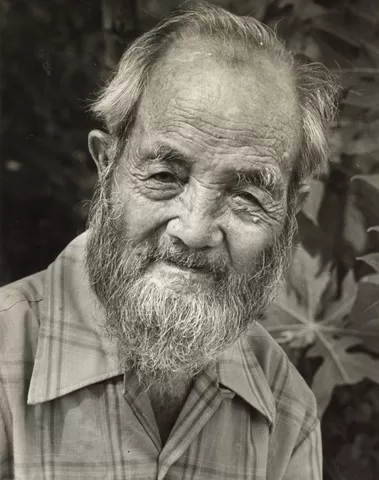George Sukeji Morikami (1887-1976) was born in Miyazu, Japan, and emigrated to the United States in 1906 to join the Yamato Colony in what became western Boca Raton. Henry Flagler’s Model Land Company had invited Morikami’s countrymen to establish a farm community and use Flagler’s Florida East Coast Railroad to ship their produce. When Morikami arrived, he was the only uneducated member of Yamato Colony. Only 19 years old, Morikami planned to earn a quick fortune and return to Japan, but he never left Florida.
The first three years of Morikami’s efforts were spent repaying the cost of passage from Japan. Discouraged, he spent a year in Brevard County, learning English while working on a farm. When Morikami returned to Yamato a year later, he borrowed tools, seed, and land to grow tomatoes. He began to prosper, but like others, he lost most of his property in the Great Depression.
As World War II broke out, Morikami also lost his crop, and the bank refused him a loan. Although he was not interred as many Japanese were in the United States, during the war a guard lived in his home, and his movements were restricted. The U. S. Army Air Corps seized the land of Yamato colonists to build a training base, which became the site of Florida Atlantic University and the Boca Raton Airport.
Morikami started again as a squatter and by the end of the war, acquired a small farm that he worked until his death. He also slowly accumulated parcels of land at $15 to $17 per acre. In 1967, he became a U. S. citizen.
Morikami wanted to give back to his new country and to salvage the memory of Yamato Colony. He donated 40 acres to the University of Florida for an experimental farm and nearly 200 acres to Palm Beach County. Morikami died in 1976, a year after the groundbreaking for Morikami Park, home of the Morikami Museum and Japanese Gardens. Morikami’s ashes were eventually returned to Miyazu, Japan, which is a Sister City to Delray Beach in honor of George Morikami.


